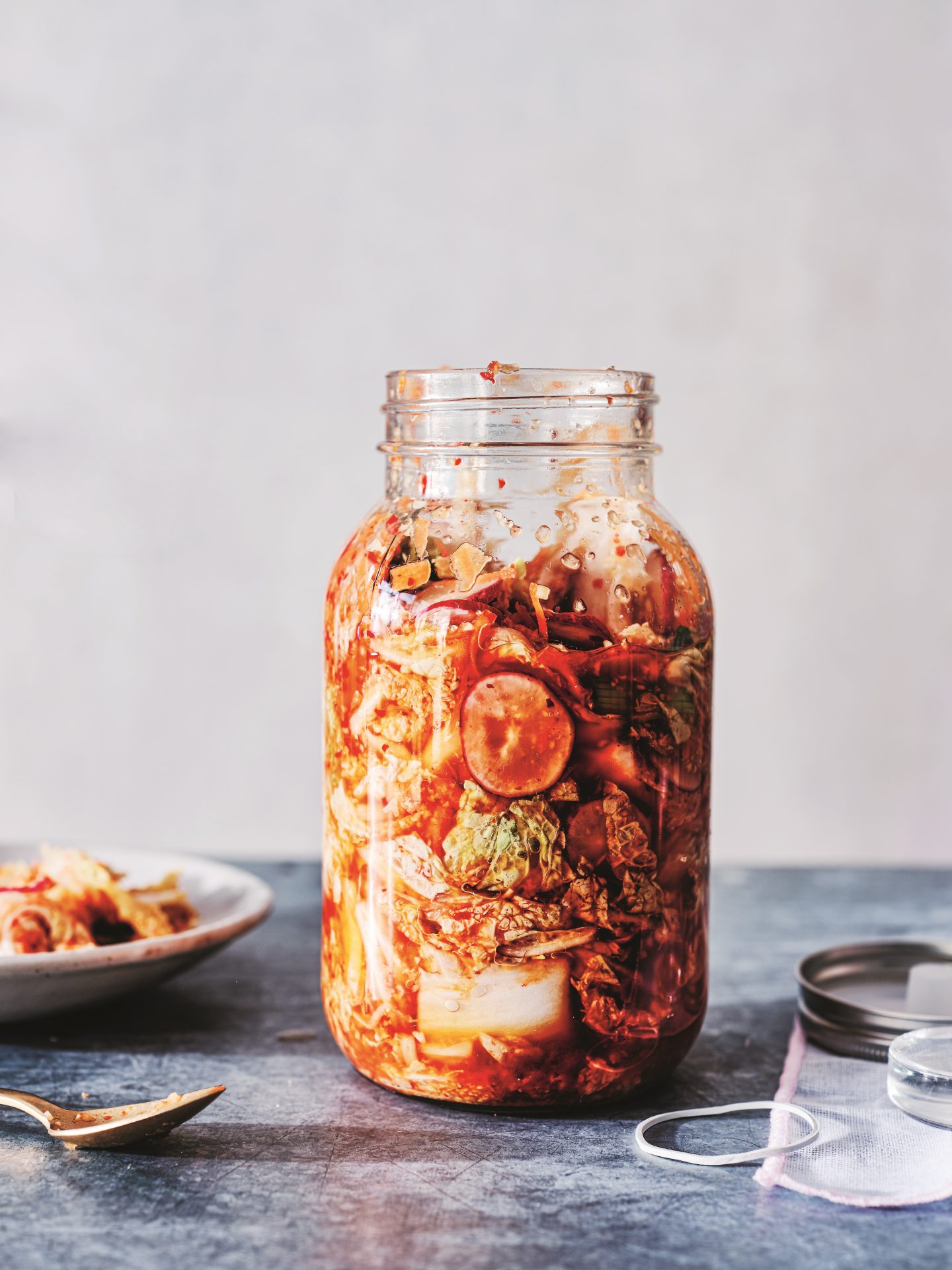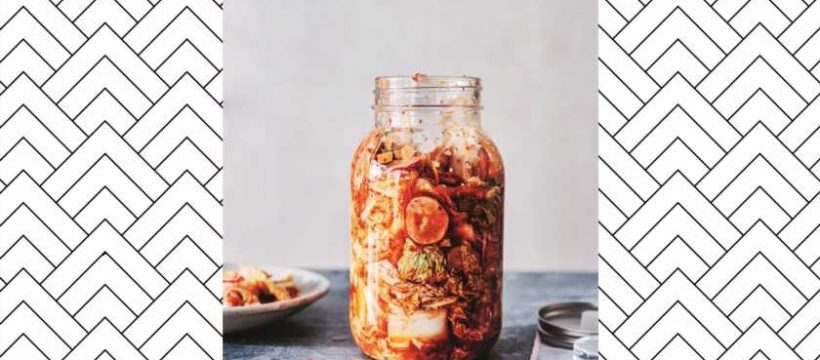If there’s one food nutritionists are always telling us to eat more of, it’s kimchi. So rather than take out a second mortgage on £5 pots of the stuff, here’s how to make your own at home, according to gut health advocates The Gut Stuff.
Kimchi is one of those foods that elevates any meal. Having a curry? Add a spicy fizz into the mix. Cheese on toast? Let the enzymes break up all that clag. Salad bowl? Scrap the need for dressing.
But kimchi isn’t just delicious, it’s also incredibly good for us – and our guts. The main ingredient is Chinese cabbage, which is rich in vitamins A and C, but the key benefit comes from the fermentation process. Fermented foods like kimchi are known to massively benefit our gut microbiomes, with one 2021 study concluding that fermented food might be better than fibre for improving gut diversity and reaping the associated health benefits.
Researchers randomly allocated participants a high-fibre diet or a fermented food diet rich in kimchi and probiotic yoghurts. They found that while both saw improvements to their microbiome, only the fermented food group increased the diversity of the strains of bacteria that lived in their gut.
That’s important, because the more diverse your microbiome, the more robust it is. With that in mind, here’s how to make your own kimchi – at a fraction of the price you’d pay for it in a shop.
Ingredients
- 20 minutes prep
- 12 hours resting
- 7-14 days fermenting
(20 servings)
Chinese leaf cabbage (napa cabbage)
1 litre water
2 tbsp sea salt
2 carrots (skin on)
100g radishes
Bunch of spring onions
6 large garlic cloves
2 shallots
2 red chillies
100g fresh ginger, peeled
1-3 tbsp Korean chilli flakes or cayenne pepper
2 tbsp tamari (optional)

Method
Day 1
Wash a litre-sized jar in hot, soapy water, then place it in the oven at 90°C fan/110°C/225°F/gas mark ¼ for 15-20 minutes. Leave to cool.
Remove the outer leaves from the cabbage and discard them. Then rinse the rest of the cabbage head well and cut into thick (5-6cm) strips.
Using a jug, make a brine by mixing the water and salt. Stir well to ensure the salt is well dissolved.
Place the sliced cabbage into a large bowl and pour the brine over the leaves so they’re covered. Cover the bowl with clingfilm or a lid if it has one, and leave at room temperate overnight.
Day 2
The following day, drain the brined cabbage, reserving the brine.
Grate the carrots, chop the radishes into thin slices and roughly chop the spring onion. Peel the garlic and shallots, and deseed the chillies.
In a blender (or using a knife to finely mince), make a paste with the ginger, garlic, deseeded red chillies, shallots and chilli flakes or cayenne pepper (depending on your desired spice level).
Transfer the paste to a large mixing bowl with your brined cabbage leaves and add the grated carrots, sliced radishes, spring onions and tamari (if using). Using rubber gloves, massage the mixture into the vegetables for 5-10 minutes.
Pack the vegetables tightly into the sterilized jar and cover with a little of the reserved brine.
Place a weight on top to ensure that everything stays beneath the brineline and securely seal the jar with a burping lid.
Days 3-7
Store your jar at room temperature for up to 14 days. Begin tasting your kimchi after seven days. It should be salty, pleasantly sour and a bit crunchy, with the flavours melding together harmoniously.
When fermented to your liking, replace the burping lid with a screw top lid.
Store in the fridge for up to four months.
Recipe from The Gut Loving Cookbook: Over 60 deliciously simple gut friendly recipes from Alana & Lisa Macfarlane of The Gut Stuff (Pavilion Books).
Image credit: Haarala Hamilton
Source: Read Full Article
